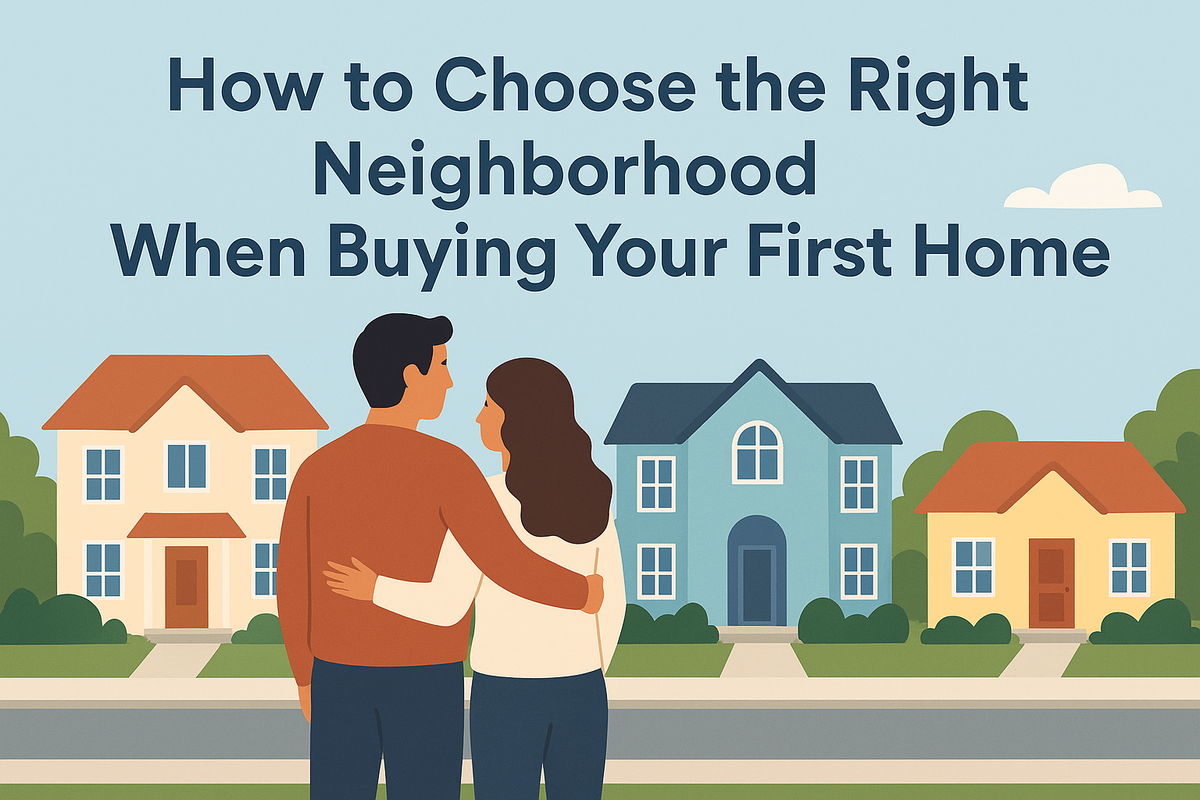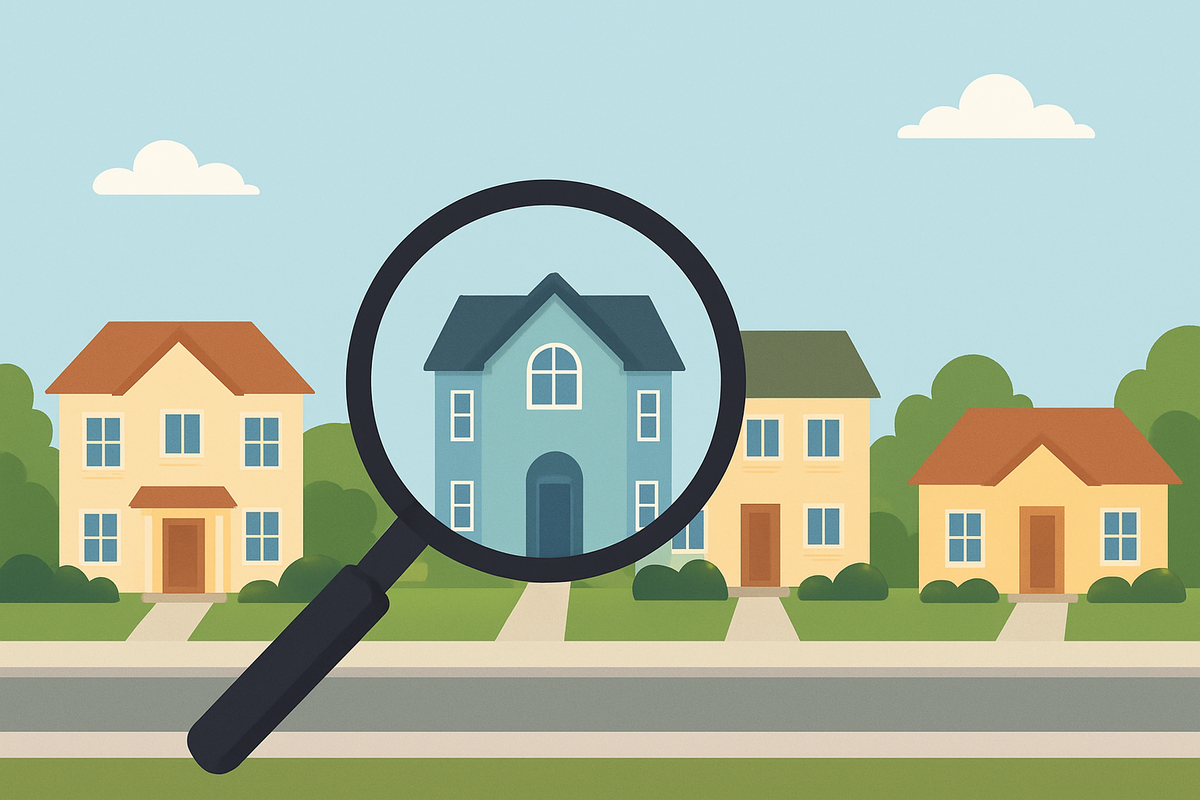Last Updated on October 3, 2025 by teamobn
Buying your first home is a milestone that comes with both excitement and challenges. While most first-time buyers focus heavily on the house itself, its layout, price, or design, the neighborhood is just as important. After all, you can renovate a kitchen or repaint the walls, but you can’t change the location.
Choosing the right neighborhood sets the foundation for your lifestyle, financial stability, and long-term investment. A home is not only where you live but also where you connect with a community, establish routines, and secure your financial future.
Contents
- 1 Step 1: Consider Your Lifestyle and Daily Needs
- 2 Step 2: Research Safety and Community Atmosphere
- 3 Step 3: Evaluate Property Values and Long-Term Growth
- 4 Step 4: Check Schools and Educational Opportunities
- 5 Step 5: Review Local Amenities and Convenience
- 6 Step 6: Examine Infrastructure and Future Development
- 7 Step 7: Visit Multiple Times Before Deciding
- 8 Step 8: Consider Lifestyle Changes and Future Plans
- 9 Balancing Lifestyle and Investment
Step 1: Consider Your Lifestyle and Daily Needs
Start by reflecting on what matters most to you and your household. Do you prefer a quiet, suburban environment or a lively, urban area with shops, cafés, and restaurants within walking distance? For families, proximity to schools, parks, and playgrounds is often a priority, while young professionals may value access to public transportation, co-working spaces, or a short commute to work.
Think about your daily routines. If you enjoy jogging or walking your dog, access to safe walking paths and green spaces is important. If you love dining out or catching live entertainment, being close to cultural or nightlife districts might outweigh a longer commute.
Making a list of non-negotiables—such as maximum commute time, quality of nearby schools, or availability of green space—helps narrow your search early in the process. Differentiating between “must-haves” and “nice-to-haves” can prevent you from becoming overwhelmed by options.
Step 2: Research Safety and Community Atmosphere
Safety is one of the top concerns for first-time homebuyers. Reviewing local crime rates and trends can give you a clear picture of how secure the area feels. Many cities provide online databases or apps where you can track neighborhood statistics.
But numbers don’t always tell the full story. It’s a good idea to visit the neighborhood at different times of the day and week to observe noise levels, traffic, and overall atmosphere. A street that feels peaceful on a Tuesday afternoon may be much louder on Friday nights.
Talking with current residents is invaluable. Ask about community events, whether neighbors look out for one another, or if there are particular blocks that are more desirable. Some communities host farmers’ markets, block parties, or neighborhood watch programs—all of which can add to the sense of belonging.
Step 3: Evaluate Property Values and Long-Term Growth
The neighborhood you choose should not only fit your lifestyle but also serve as a smart financial investment. Look at recent home sales, property value trends, and any planned developments that could affect appreciation.
Conducting a property records search can reveal useful information such as tax assessments, zoning changes, and ownership history. This helps you understand whether the area is stable, up-and-coming, or declining.
For example, neighborhoods near new transit lines, universities, or growing business districts often see faster appreciation. On the other hand, areas with declining infrastructure or frequent foreclosures may carry more risk.
Even if the upfront cost is higher, buying in a neighborhood with consistent appreciation and strong demand tends to offer better long-term returns. Think about where the neighborhood is likely to be in 5, 10, or even 20 years.
Step 4: Check Schools and Educational Opportunities
Even if you don’t have children, the quality of nearby schools plays a major role in property value. Homes in strong school districts often hold their value better and sell faster.
Review school ratings, extracurricular offerings, and available facilities. You can often find this information through state education websites or local parent forums. If possible, tour the schools in person to get a sense of their environment.
Don’t overlook higher education opportunities or specialized schools either. Being near a community college, university, or technical school can attract future buyers and renters, keeping demand strong.
Step 5: Review Local Amenities and Convenience
The availability of amenities can significantly affect your daily life. Consider how close the neighborhood is to grocery stores, hospitals, gyms, libraries, and entertainment options. Convenience is often underestimated until you have to drive 20 minutes just to pick up milk.
Public transportation access and major highways are equally important, especially if you rely on commuting. For drivers, consider parking availability—some urban neighborhoods have beautiful homes but limited street parking, which can be frustrating.
When possible, dedicate a weekend to exploring the neighborhood on foot or by car. Stop into local coffee shops, try nearby restaurants, and visit grocery stores to see if they meet your needs. This kind of firsthand experience helps you imagine what daily life would look like.
Step 6: Examine Infrastructure and Future Development
Neighborhoods are constantly evolving, and upcoming projects can dramatically impact your quality of life and property value. Review city planning documents, local government websites, and community boards for insight into future developments.
A new school, park, or transit line nearby could make the area more attractive, while a large industrial project might increase traffic and noise. For example, a quiet suburban area could change quickly if a new shopping complex or stadium is being built.
Pay attention to existing infrastructure as well. Well-maintained roads, reliable public transit, and modern utility systems all contribute to long-term stability. Poor infrastructure often signals neglect, which could affect property values in the future.
Step 7: Visit Multiple Times Before Deciding
A single visit rarely gives a full picture of a neighborhood. Spend time in the area during the week, on weekends, in the morning, and at night. This helps you experience everything from rush-hour traffic to late-night activity.
Walking the streets at different times allows you to observe small but telling details: Are children playing outside? Are the sidewalks clean? Do people appear to take pride in their homes and yards? These clues can reveal much about the community.
If possible, talk to neighbors during your visits. A casual chat can reveal whether the area feels welcoming, quiet, or overly busy. Don’t hesitate to ask about their experience living there—most residents are happy to share their perspective.
Step 8: Consider Lifestyle Changes and Future Plans
When buying your first home, it’s easy to focus only on your current needs. But since most homeowners stay in a property for at least 7–10 years, it’s important to consider how your lifestyle may change over time.
For example, a young couple may not have children today but could want to start a family in a few years. That makes proximity to good schools, daycare centers, and family-friendly amenities worth factoring into the decision.
Another important consideration is resale value. Will your home still appeal to a wide range of buyers in the future? Neighborhoods with flexible appeal—close to schools, public transit, shopping, and parks—are more resilient to market shifts.
Thinking ahead ensures your neighborhood won’t just suit your present lifestyle but will also support your future goals, whether that means raising a family, advancing your career, or eventually downsizing.
Balancing Lifestyle and Investment
Choosing the place means balancing what works for your lifestyle today with what makes sense as a long-term investment. Your first home doesn’t just provide shelter; it anchors you to a community and creates a foundation for your financial future.
Researching safety, schools, amenities, and property value trends gives you a well-rounded understanding of the area. By combining data with personal observations, you’ll avoid surprises and make a confident decision.
For first-time homebuyers, the right neighborhood is more than just a backdrop for your home. It’s where you’ll build your life, create memories, and watch your investment grow. Taking the extra time to evaluate both lifestyle fit and financial potential ensures that your first home purchase sets you up for long-term happiness and success.






